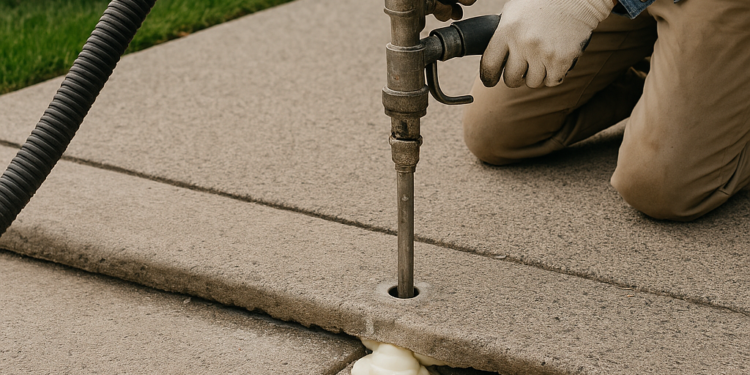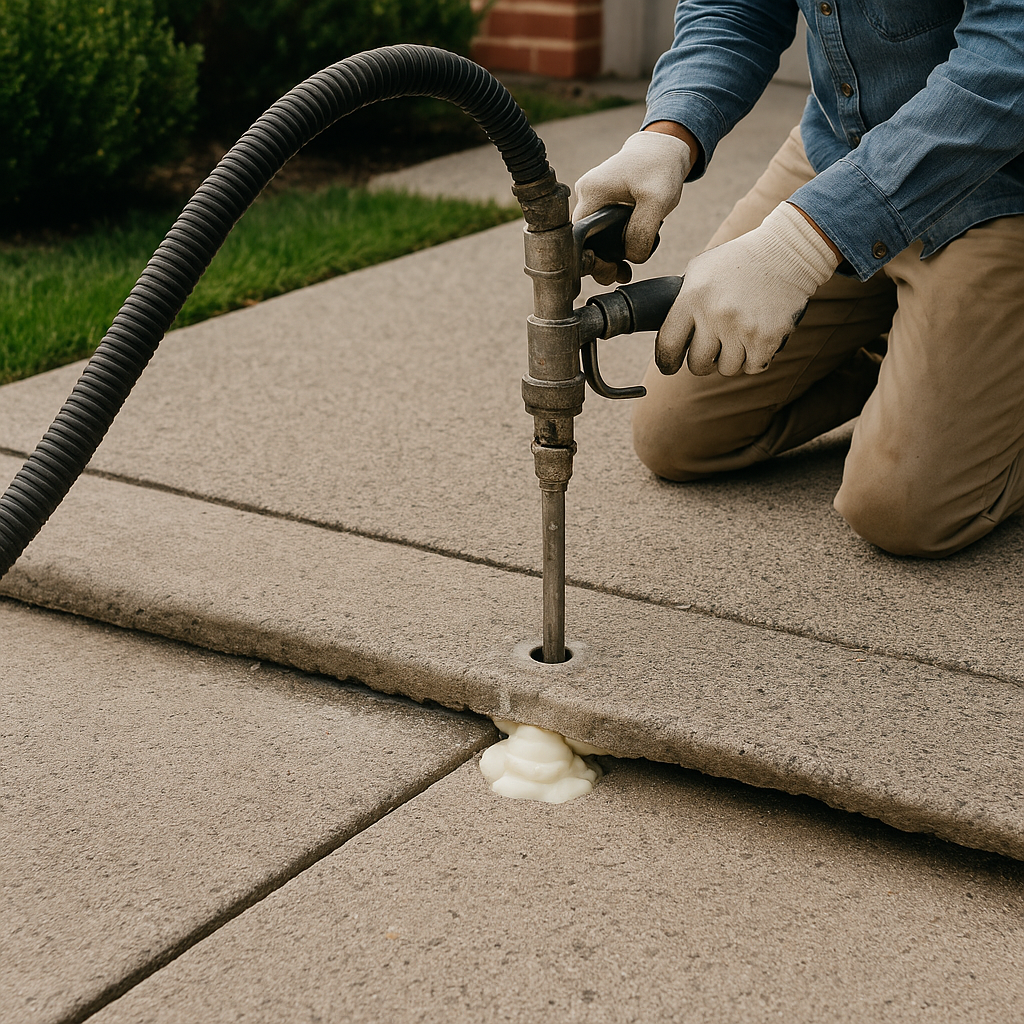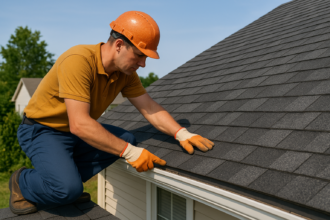How Concrete Lifting Techniques Are Transforming Modern Construction

Concrete lifting techniques are revolutionizing the construction industry by offering efficient, cost-effective solutions for repairing sunken or uneven surfaces. Instead of tearing out and replacing damaged slabs—a process that can be time-consuming and expensive—modern lifting methods restore stability and alignment with minimal disruption. Innovations such as polyurethane foam injection and slabjacking extend the lifespan of concrete structures and reduce environmental impact by reusing existing materials. These advancements are changing how contractors, engineers, and property owners approach maintenance, blending precision with sustainability in today’s fast-paced construction landscape.
Table of Contents
- 1 What Is Concrete Lifting?
- 2
- 3 Common Causes Of Sinking Concrete
- 4 Methods Of Concrete Lifting
- 5 Polyurethane Foam Injection: The Modern Approach
- 6 Benefits Of Concrete Lifting For Property Owners
- 7 When To Consider Repairing Vs. Replacing Concrete
- 8 Real-World Examples And Case Studies
- 9 Future Trends In Concrete Repair
- 10 Conclusion
What Is Concrete Lifting?
Concrete lifting is a proven technique to restore sunken, uneven surfaces by elevating the existing concrete to its original level. This approach is now widely utilized across driveways, sidewalks, patios, and commercial floors, offering property owners a cost-effective solution compared to full slab replacement. Innovations in concrete lifting, such as slurry pumping and advanced foam technologies, have streamlined the process, reducing time and environmental impact. For those seeking expert regional solutions, Washington slabjacking and grouting companies provide reliable, advanced methods tailored to various concrete problems.
The surge in interest around concrete lifting stems from its durability and minimal disruption to surrounding areas. Rather than removing and replacing slabs, property owners can benefit from extending the life of their structures while minimizing material waste and project downtime. Furthermore, concrete lifting is often chosen for its sustainability, as it reduces the amount of new material required for repairs and lowers the overall carbon footprint of property maintenance. New materials and application techniques advancements continue to drive greater adoption among contractors and municipalities, making it an increasingly vital solution for private and public infrastructure projects.
Common Causes Of Sinking Concrete
Several factors can influence the stability of concrete slabs. The most common causes include soil compaction, washouts due to poor drainage, and the natural decomposition of organic underground materials. For example, when the soil beneath a driveway washes away during heavy rain, a void forms, and the unsupported concrete eventually sinks or cracks. Other frequent contributors are freeze-thaw cycles, tree root growth, and construction on inadequately prepared ground. Over time, these conditions create voids beneath concrete surfaces, allowing slabs to settle, crack, or even become safety hazards. Recognizing early warning signs—such as uneven surfaces, pooling water, or visible cracks—can help property owners take timely action and avoid expensive replacements.
Addressing the symptom and the root cause is essential for a long-lasting solution. That means lifting the slab and often remedying the underlying drainage issues, stabilizing the soil, or removing tree roots that contributed to the problem. Collaborating with specialized service providers ensures that the appropriate measures are in place to not only lift the slab but to also stabilize and enhance the subsoil. This comprehensive approach delivers safer walkways, driveways, and industrial spaces while protecting the property’s value. Ignoring these deeper causes may lead to repeated settling, so a well-rounded repair plan is always the best investment.
Methods Of Concrete Lifting
Multiple techniques exist for raising sunken concrete. The oldest and most established is mudjacking (slabjacking), where a cement-based slurry is pumped beneath the slab. This method, favored for large or heavy applications, is effective but can be invasive and slow to cure. More recently, contractors have adopted grout pumping, which uses more specialized material blends for targeted lifts. This method delivers reliable results for areas affected by minimal structural damage. Still, it may not always suit high-moisture environments, as the grout can be susceptible to washout over time.
A technologically advanced alternative is polyurethane foam injection—a cleaner, faster, and more precise procedure. Foam-based lifting uses lighter materials and provides exceptional versatility in residential and commercial settings. The choice of method depends on variables like the intended use of the area, size of the slab, local climate conditions, and budget considerations. Selecting the right option ensures effective restoration and long-term performance. Some modern projects even combine these methods to optimize results.
Polyurethane Foam Injection: The Modern Approach
Polyurethane foam injection has become the gold standard in concrete lifting for its speed, accuracy, and minimal disruption. During this process, small holes are drilled into the affected slab, and expanding foam is injected underneath. The foam’s rapid expansion gently lifts the slab back to its desired level and then hardens, providing a permanent solution that resists water and erosion. This method can correct even severe settling cases without disturbing landscaping or nearby structures, making it especially attractive for homes and commercial properties where aesthetics and downtime matter.
The advantages of polyurethane foam injection are clear: less mess, fewer and smaller drill holes, a quick curing time (often within hours), and a more reliable seal against future settling. Unlike traditional materials, polyurethane foam is lightweight and exerts minimal pressure on the underlying soil, further mitigating the risk of future settling. This method is beneficial in high-traffic areas, as treated surfaces are often ready for regular use the same day. The virtually immediate readiness of repaired surfaces translates directly into cost savings and reduced liability, a major consideration for business owners and municipalities.
Benefits Of Concrete Lifting For Property Owners
Concrete lifting is becoming the preferred option for residential and commercial settings due to its affordability, minimal disruption to daily activities, environmental responsibility, and fast turnaround. This method addresses repairs, improves safety by removing tripping hazards, and restores accessibility. Insurance companies often favor concrete lifting projects due to reduced liability from slips and falls. The long-term value of restoring structural integrity at a lower cost is also driving the popularity of this method.
When To Consider Repairing Vs. Replacing Concrete
While concrete lifting offers exceptional results for many scenarios, assessing the slab’s overall condition is essential before proceeding. Severe structural damage, substantial surface deterioration, or widespread deep cracking are situations where full replacement may be necessary. If the reinforcing mesh within the slab has rusted or the surface has suffered extreme weathering or chemical damage, lifting may be a temporary fix at best.
For surfaces that have only settled or become uneven—but remain fundamentally sound—lifting methods resolve the issue at a fraction of the cost and disruption. Large cracks caused solely by settling, rather than expansive subsoil failure or massive freeze-thaw heaving, are excellent candidates for concrete lifting. Property owners should consider the stamped concrete’s usage, age, and future needs when choosing between repair and replacement. An on-site inspection by an experienced contractor is the best way to determine the most appropriate solution.
Real-World Examples And Case Studies
Across the United States, cities, schools, and logistics hubs are adopting concrete lifting to avoid the high expense of demolition and pour-back projects. Municipal governments regularly utilize foam injection for sidewalk repairs, enhancing neighborhood safety with less impact on local traffic. Retail centers in the private sector depend on foam lifting to ensure pedestrian walkways remain safe and accessible, reducing business interruptions.
Quick repairs are vital in educational environments, especially before school sessions resume; foam technologies have shortened repair timelines while offering durable results. Similarly, warehouse managers and industrial facility operators seek concrete lifting to maintain smooth, safe floors with minimal operational downtime. These successes have contributed to a nationwide shift toward repair-first strategies and demonstrate the tangible benefits for organizations of every scale. Case studies frequently show that the savings in time and cost can be substantial compared to traditional reconstruction, further bolstering concrete lifting’s appeal.
Future Trends In Concrete Repair
As the push for smarter, greener buildings continues, innovations in concrete repair are accelerating. Integrating IoT-based sensors for early detection, recyclable materials, and AI-driven diagnostics promises to enhance the efficacy and environmental profile of concrete lifting. Self-monitoring concrete slabs can alert building managers to void formation before damage becomes visible, allowing for preemptive repairs.
Industry reports suggest that tighter building sustainability standards will further encourage the adoption of rapid, minimally invasive concrete repair techniques. Staying informed about technological advancements and eco-friendly material options is key for property owners, building managers, and contractors. Advances in automation, such as robotic slab levelling and machine-assisted injections, are on the horizon and set to transform the construction industry’s approach to long-term maintenance and repair. As research and development continue, the next generation of materials and procedures will likely be less invasive, more durable, and more energy efficient.
Conclusion
Concrete lifting is at the forefront of modern construction repair, allowing property owners to preserve valuable infrastructure with minimal cost and environmental impact. Techniques such as polyurethane foam injection deliver unprecedented results—precision, speed, and lasting durability. Embracing these innovative methods extends the lifespan of structures and yields safer, more sustainable spaces for communities now and in the future. By keeping an eye on emerging technologies and investing in proactive maintenance, property owners can get the most value and longevity out of their concrete surfaces for years to come.







